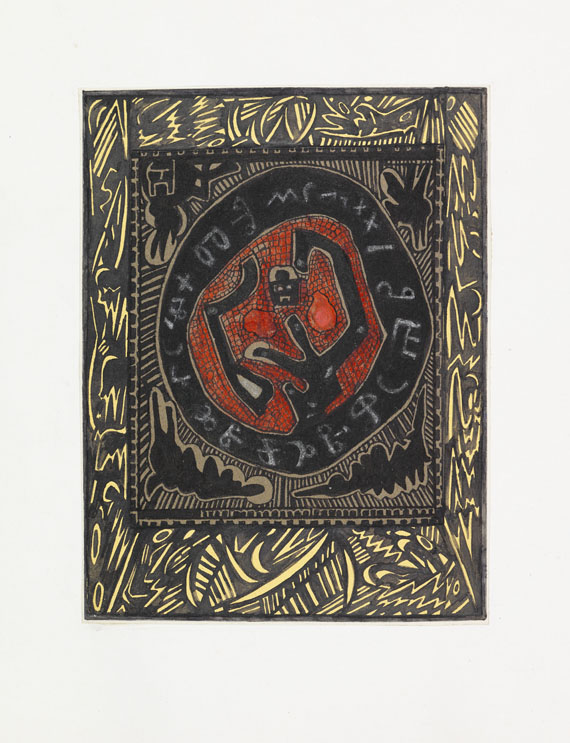Dictionary


Deluxe edition - Special edition
De luxe editions are books printed for a select circle in limited, numbered editions, especially in works that are collected by bibliophiles. De luxe editions are distinguished from normal editions in being printed on better quality paper and featuring top-quality (for instance, colored) illustrations or even original prints and costly, even sumptuous bindings. In many cases the special features of the edition are noted on the title-page or licence leaf. By the 15th and 16th centuries, de luxe editions were being printed on vellum or the finest papers with broad page margins and sent out by authors as dedication copies. Particularly large sheets of paper, perfumes, color prints or other hand-tinted illustrations and the author's signature are often among the features of such select editions made for princes. Deluxe editions had their first flowering in the 18th century when they were a sine qua non in any bibliophile's library, often in individually created, handmade bindings adorned with supralibros, often in gold, as marks of ownership. A further distinction should be drawn to encompass what were known in German Historicism as "Prachtausgaben" [magnificent editions], which were usually mechanically printed books in large formats in publisher's bindings. By the latter half of the 19th century, France was producing "livres de luxe", with the entire design of the book (format, paper, typeface, binding, etc) subordinate to an overarching aesthetic concept. By drastically reducing the size of editions, returning to original prints and featuring the signatures of authors and illustrator-artists, modern producers of de luxe editions have ensured that they are once again coveted collector's items. Since the late 19th century, private presses in England and Germany have been making exemplary de luxe editions, thus smoothing the path for the livre d'artiste in the 20th century.
De luxe editions are books printed for a select circle in limited, numbered editions, especially in works that are collected by bibliophiles. De luxe editions are distinguished from normal editions in being printed on better quality paper and featuring top-quality (for instance, colored) illustrations or even original prints and costly, even sumptuous bindings. In many cases the special features of the edition are noted on the title-page or licence leaf. By the 15th and 16th centuries, de luxe editions were being printed on vellum or the finest papers with broad page margins and sent out by authors as dedication copies. Particularly large sheets of paper, perfumes, color prints or other hand-tinted illustrations and the author's signature are often among the features of such select editions made for princes. Deluxe editions had their first flowering in the 18th century when they were a sine qua non in any bibliophile's library, often in individually created, handmade bindings adorned with supralibros, often in gold, as marks of ownership. A further distinction should be drawn to encompass what were known in German Historicism as "Prachtausgaben" [magnificent editions], which were usually mechanically printed books in large formats in publisher's bindings. By the latter half of the 19th century, France was producing "livres de luxe", with the entire design of the book (format, paper, typeface, binding, etc) subordinate to an overarching aesthetic concept. By drastically reducing the size of editions, returning to original prints and featuring the signatures of authors and illustrator-artists, modern producers of de luxe editions have ensured that they are once again coveted collector's items. Since the late 19th century, private presses in England and Germany have been making exemplary de luxe editions, thus smoothing the path for the livre d'artiste in the 20th century.
Offers for The Book of Modernism
Headquarters
Joseph-Wild-Str. 18
81829 Munich
Phone: +49 89 55 244-0
Fax: +49 89 55 244-177
info@kettererkunst.de
Louisa von Saucken / Undine Schleifer
Holstenwall 5
20355 Hamburg
Phone: +49 40 37 49 61-0
Fax: +49 40 37 49 61-66
infohamburg@kettererkunst.de
Dr. Simone Wiechers / Nane Schlage
Fasanenstr. 70
10719 Berlin
Phone: +49 30 88 67 53-63
Fax: +49 30 88 67 56-43
infoberlin@kettererkunst.de
Cordula Lichtenberg
Gertrudenstraße 24-28
50667 Cologne
Phone: +49 221 510 908-15
infokoeln@kettererkunst.de
Hessen
Rhineland-Palatinate
Miriam Heß
Phone: +49 62 21 58 80-038
Fax: +49 62 21 58 80-595
infoheidelberg@kettererkunst.de
We will inform you in time.




